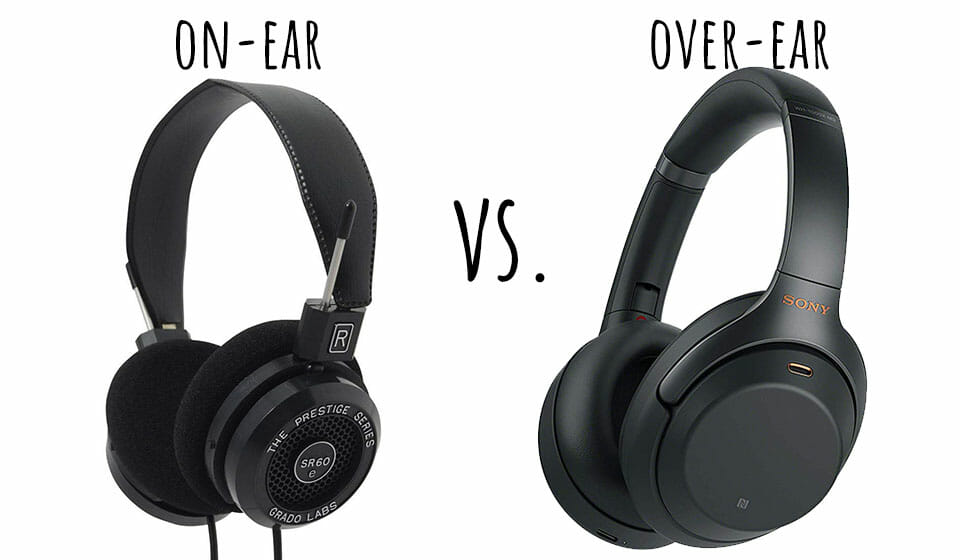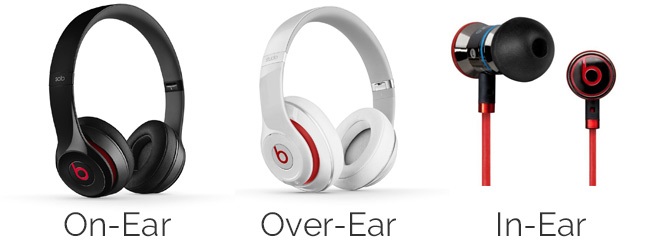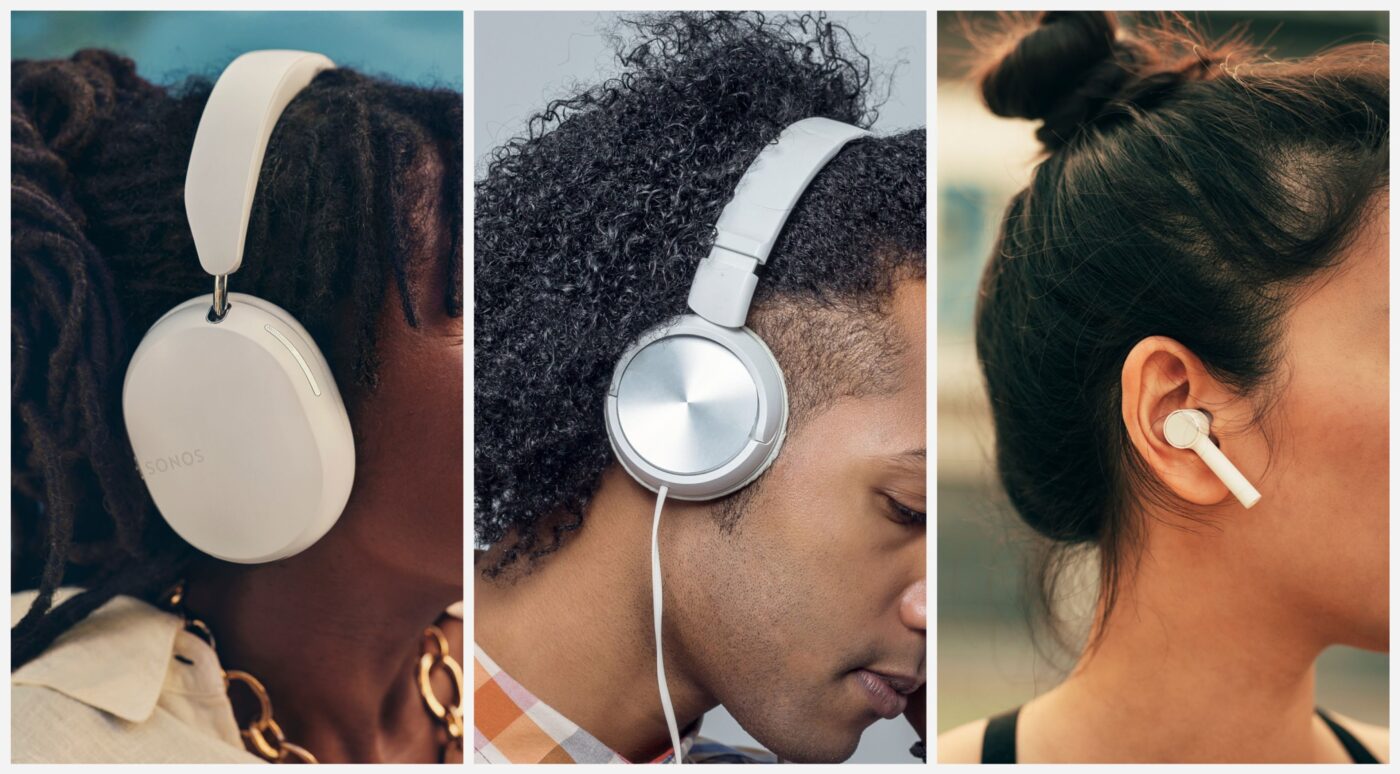Over-Ear vs. On-Ear vs. In-Ear Headphones: Which is Best for You?

When it comes to choosing the right headphones, the options can be overwhelming. With so many types of headphones available, it’s crucial to understand the key differences between over-ear, on-ear, and in-ear headphones. Each style offers unique benefits in terms of comfort, sound quality, portability, and use case. In this comprehensive guide, we’ll compare these three headphone styles to help you make an informed decision based on your needs and preferences.
Understanding the Different Types of Headphones
1. Over-Ear Headphones
Over-ear headphones, often referred to as circumaural headphones, feature ear cups that fully cover your ears. They are known for their superior sound quality and comfort, making them a popular choice for audiophiles and professionals.

Key Features:
- Large ear cups that encircle your ears, providing excellent noise isolation.
- Deep, immersive sound with rich bass and clear highs, making them ideal for music and gaming.
- Comfortable design suitable for long listening sessions.
- Excellent noise cancellation (in many models) that blocks out ambient noise.
Pros:
- Superior sound quality: Over-ear headphones are often considered the best in terms of sound, thanks to their larger drivers and better acoustics.
- Comfort: The cushioned ear cups provide a snug, comfortable fit for long periods.
- Noise isolation: They create a seal around your ears, blocking out a lot of external noise, especially useful in noisy environments.
Cons:
- Bulky: Due to their size, over-ear headphones are less portable and can feel cumbersome, especially when traveling.
- Heat buildup: The closed design can cause heat to accumulate around your ears, making them uncomfortable in warmer weather.
2. On-Ear Headphones
On-ear headphones, also known as supra-aural headphones, rest directly on your ears. They are a middle ground between over-ear and in-ear headphones, offering a balance of portability, comfort, and sound quality.

Key Features:
- Compact design that sits on the ears without covering them completely.
- Typically lighter and more portable than over-ear headphones.
- Some models offer foldable designs for easy storage.
Pros:
- Portability: Their smaller size makes them more portable than over-ear headphones, ideal for commuting or traveling.
- Better sound than in-ear: On-ear headphones generally offer better sound quality than in-ear models while still being more compact.
- Comfortable: Although not as comfortable as over-ear headphones, they are still suitable for extended use, especially if you don’t mind having them press lightly on your ears.
Cons:
- Less noise isolation: They don’t block out as much external noise as over-ear headphones, which can be a drawback in loud environments.
- Pressure on ears: Prolonged use may cause discomfort due to the pressure exerted on your ears.
3. In-Ear Headphones
In-ear headphones, or earbuds, are the smallest and most portable type of headphones. They are designed to fit directly into your ear canal, making them a popular choice for people on the go.

Key Features:
- Compact design that fits directly into the ear canal.
- Lightweight and portable, making them ideal for active users, sports enthusiasts, and travelers.
- Variety of styles, including wired and wireless options.
Pros:
- Portability: In-ear headphones are extremely compact and easy to carry in your pocket or bag.
- Ideal for workouts: Many in-ear models come with sweatproof or waterproof features, making them great for exercise or outdoor activities.
- Good sound quality: Although not as rich as over-ear headphones, high-quality in-ear headphones can still deliver impressive sound.
Cons:
- Comfort: Some people may find them uncomfortable or difficult to keep in place, especially for extended use.
- Noise isolation: While they can block out some ambient noise, they don’t provide the same level of isolation as over-ear headphones.
Key Differences Between Over-Ear, On-Ear, and In-Ear Headphones
Now that we’ve explored the features of each headphone style, let’s break down the key differences to help you decide which one best suits your needs:
| Feature | Over-Ear | On-Ear | In-Ear |
|---|---|---|---|
| Sound Quality | Best overall sound, especially for bass and clarity. | Better than in-ear but not as deep as over-ear. | Good sound, but generally lacks the depth of over-ear and on-ear. |
| Comfort | Most comfortable for long listening sessions. | Comfortable, but may cause slight discomfort after extended use. | Least comfortable for prolonged wear, depending on ear shape. |
| Portability | Bulky and less portable. | More portable than over-ear, but not as compact as in-ear. | Extremely portable, fits easily in pockets. |
| Noise Isolation | Best at isolating from external noise, especially with noise-cancelling models. | Moderate noise isolation, but not as good as over-ear. | Provides decent isolation, especially with well-fitting ear tips. |
| Battery Life | Longer battery life (for wireless models). | Battery life is generally good, but depends on the model. | Often the shortest battery life due to smaller battery capacity. |
Which Type of Headphones Should You Choose?
For Audiophiles and Home Use:
If sound quality is your top priority and you plan to use your headphones at home, over-ear headphones are your best bet. They provide deep bass, excellent sound clarity, and a comfortable fit for long listening sessions. The noise isolation feature also makes them ideal for environments where you want to escape the surrounding noise, like in a home studio or while gaming.
For Commuters and Travelers:
If portability is key, and you don’t mind sacrificing some sound quality, on-ear headphones are a great compromise. They are compact enough to travel with easily, yet they offer better sound than in-ear models. On-ear headphones are also a good choice for anyone who needs to keep an ear open to their surroundings while on the go.
For Active Lifestyles and Workouts:
If you’re looking for something lightweight, portable, and sweat-resistant, in-ear headphones are ideal. Many models come with features like wireless connectivity, customizable ear tips, and even fitness-oriented designs. They’re perfect for running, cycling, or other activities where you don’t want bulky headphones getting in the way.
FAQ Section
Q: Can I use over-ear headphones for gaming?
A: Yes, over-ear headphones are an excellent choice for gaming due to their immersive sound quality and noise isolation. Many models also feature noise-cancelling capabilities, which enhance communication with teammates.
Q: Are on-ear headphones suitable for music production?
A: While on-ear headphones may not offer the same level of sound depth as over-ear models, they can still provide excellent sound for music production. However, for critical listening and detailed sound, over-ear headphones are typically preferred.
Q: Do in-ear headphones come with noise cancellation?
A: Some high-end in-ear headphones offer active noise cancellation, but the effect may not be as strong as what you get with over-ear models. However, they can still block out a reasonable amount of ambient noise if they fit securely in the ear.
Q: Which is better for long hours of use: over-ear or on-ear?
A: Over-ear headphones are generally more comfortable for long listening sessions, as they don’t press directly on your ears. On-ear headphones can cause discomfort over time, especially if worn for extended periods.
Conclusion
When choosing between over-ear, on-ear, and in-ear headphones, the best option depends on your personal preferences and how you intend to use them. If you’re an audiophile or a gamer, over-ear headphones provide the best sound quality and comfort. For those who prioritize portability, on-ear and in-ear headphones are excellent choices, with in-ear models being perfect for active lifestyles.
By understanding the pros and cons of each type, you’ll be well on your way to choosing the ideal headphones to suit your needs.
Further Reading:
Choose wisely, and let your music, gaming, or workout experience reach new heights with the perfect pair of headphones!

